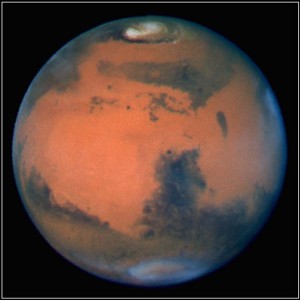NASA wants to shorten the journey to Mars.
It took about eight months for its Mars rover, Curiosity, to reach the red planet. And now, the US space agency is looking for ways to cut the travel time for future manned missions there.
Researchers in Washington State say that might be possible through a unique manipulation of nuclear fusion, the same energy that powers the sun and stars.
Scientists at the University of Washington and at MSNW, a Redmond, Washington, space propulsion company, have joined forces to build components of a fusion-powered rocket which could make deep space travel easier, faster and cheaper, with fewer potential health risks.
“Using existing rocket fuels, it’s nearly impossible for humans to explore much beyond Earth,” said John Slough, a UW associate professor and president of MSNW. “We are hoping to give us a much more powerful source of energy in space that could eventually lead to making interplanetary travel commonplace.”

A concept image of a spacecraft powered by a fusion-driven rocket. Solar panels mounted on the sides would collect energy to initiate the process that creates fusion. (University of Washington, MSNW)
Slough said his team has already calculated the possibilities of 30 and 90-day expeditions to Mars using a rocket powered by fusion. Not only would the trip be quicker, but it would also be more practical and less costly, according the research team.
Each portion of the process has proven successful in lab tests, but Slough said researchers still need to combine each of those isolated tests into a final experiment that will produce fusion using the newly developed technology.
The team has developed a type of plasma that is encased in its own magnetic field. Compressing the plasma to high pressure with its magnetic field should produce nuclear fusion, according to the research team.
The scientists hope to power a rocket using the powerful magnetic fields to implode large metal rings surrounding the plasma to compress it into a fusion state. The collapsing rings will then come together to form a shell that will ignite the fusion.
While the compression time will only last for a few microseconds, enough energy will be released to quickly heat and ionize the shell. The shell’s now super-heated and ionized metal will be forced out of a rocket nozzle at a high velocity. Repeating that process every minute or so will propel the spacecraft, according to the researchers.

The fusion driven rocket test chamber at the UW Plasma Dynamics Lab in Redmond. (University of Washington, MSNW)
Only a small amount of fusion is needed to power a rocket, according the researchers. A small grain of fusion material has the same energy content as several liters of rocket fuel.
“I think everybody was pleased to see confirmation of the principal mechanism that we’re using to compress the plasma,” Slough said. “We hope we can interest the world with the fact that fusion isn’t always 40 years away and doesn’t always cost $2 billion.”
Slough says he hopes to have all the elements of his team’s new process ready for a first test at the end of the summer.






















This is very cool. Hope it works as they plan although the multi-billion dollar fusion energy scam lobby may not be happy about this announcement. Good luck guys.